Are you intrigued by the potential wealth of the search arbitrage business? You're not alone. The idea of making money online is an attractive one, isn't it? But let's be honest, the path to success is not crystal clear.
You might be wondering, how do I get started?
Here's the golden rule — the cornerstone of a profitable search arbitrage business is two-fold: great content and great ads. These are the heart and soul of your operation.
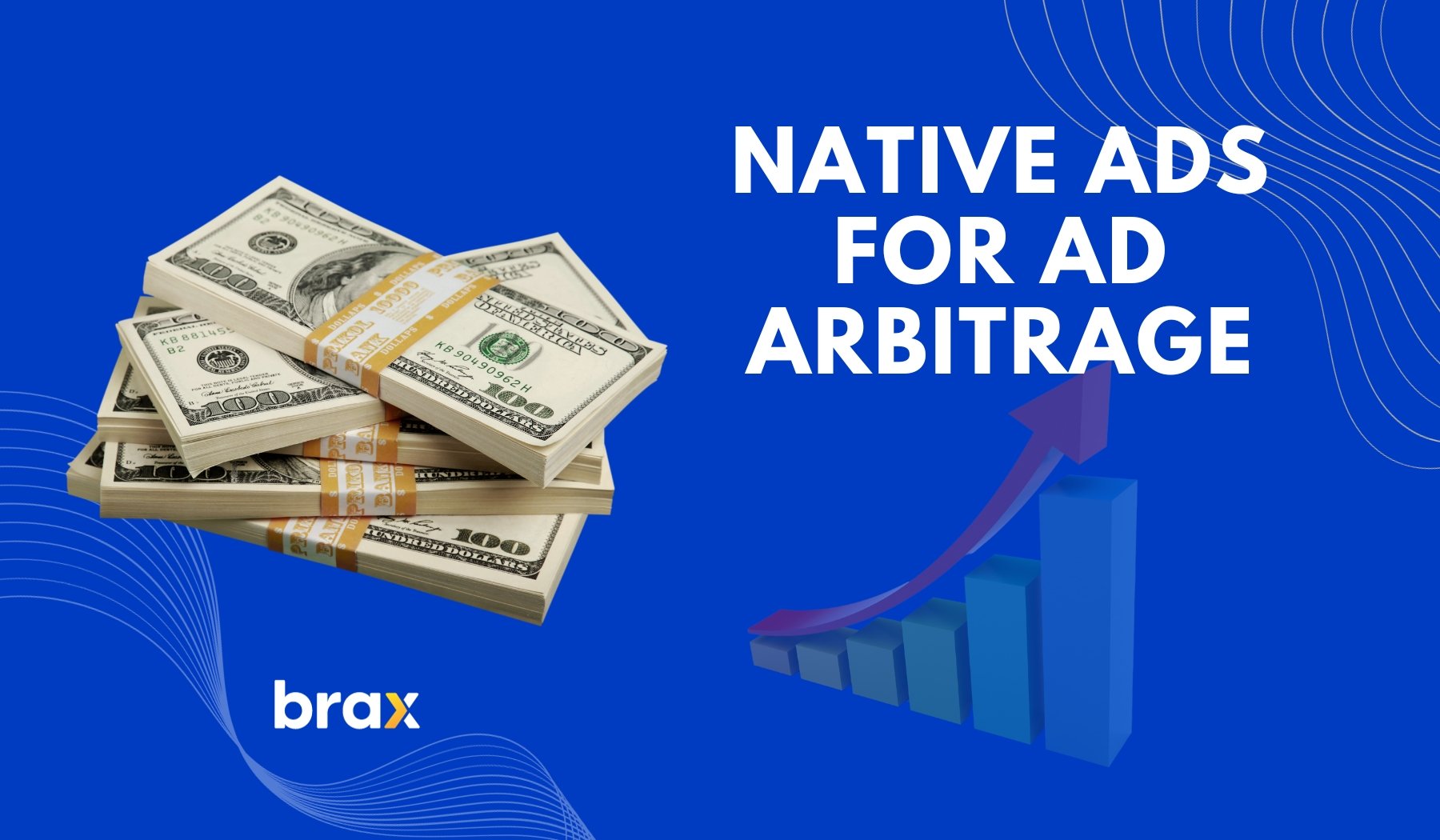
But how do you generate these? Mystery solved — that's exactly what we're going to explore. This guide is here to help you navigate those choppy waters and find your way to the treasure island of ad arbitrage.
Buckle up, it's going to be an enlightening journey!
Why Use Native Ads for Ad Arbitrage?
Native ads are the secret sauce in the recipe of ad arbitrage.
Imagine buying and selling. But instead of goods, you deal with web traffic. You purchase good quality traffic at a lower price and sell it at a higher one. That's ad arbitrage in a nutshell!
Why native ads, though?
- It's because they don't look like ads!
They blend seamlessly with the content, making them less intrusive to your website visitors.
- Native ads usually cater to your visitors' interests.
As a result, your visitors are more likely to click and engage with them. In fact, according to a study by Sharethrough, people view native ads 53% more than traditional display ads.
- Unlike organic traffic, native ads aren't affected by changes in Google's algorithm.
Remember that dreaded feeling of your traffic numbers plummeting overnight, all due to an unexpected algorithm update? You don't have to worry about that with native ads.
They ensure a consistent flow of visitors, making them a reliable source of traffic for your Google Adsense arbitrage or even when you use other publisher networks.
- You have full control.
Now, you might be thinking, "But organic traffic is free. Why should I pay for native ads?" Good question! With organic traffic, you're at the mercy of search engines.
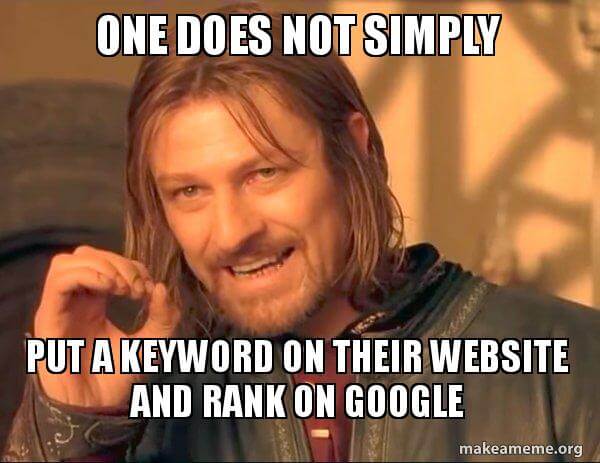
With native ads, you are in control. You decide where your ads will appear, who sees them, and how you want to portray your brand. It's like having your own personal advertising agency.
And with control comes stability. Stability that is critical to the success of your native ad arbitrage business.
- Ad arbitrage is a game of numbers.
The more traffic you have, the more money you make. This is where native ads shine. They can reach a larger audience compared to traditional ads.
This is because native ads are displayed on various platforms, increasing their visibility. According to eMarketer, spending on native digital display ads reached $97.46 billion in 2023, accounting for over 59.7% of all digital display ad spending in the US.
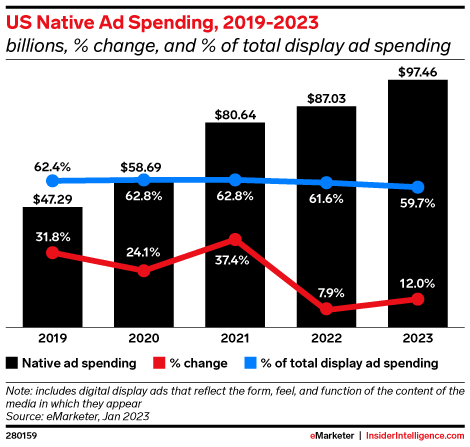
- It's not just about quantity. Quality matters, too.
Native ads attract quality traffic that translates into profits. They cater to visitors who are genuinely interested in what you offer, unlike organic traffic, which can sometimes attract irrelevant visitors.
- Native ads are a key component in the ad arbitrage mix.
They help to attract and retain visitors, improve engagement, and increase the chance of conversions. More importantly, they provide sustainability to your ad arbitrage business, protecting it from the ever-changing landscape of online algorithms.
The numerous advantages of native ads make them an invaluable asset in your ad arbitrage toolkit. If you're as convinced as we are, it's time to start learning how you can use native ads for ad arbitrage.
7 Types of Native Ads You Can Use in Ad Arbitrage
Alright, are you ready to dive deeper into the world of native ads? Excellent! Together, we are going to explore the various types of native ads you can use in your ad arbitrage strategy.
Understanding these different ad types is like knowing your tools before you start a construction project. With the right tools, you can build something amazing.
Each of these ad types has a unique approach to capturing attention and driving engagement. Let's break it down and see what each one brings to the table.
Recommendation Widgets
The most popular ones are recommendation widgets. They're those little boxes suggesting 'other articles you might like'. When you talk of native ads, this is usually what comes to mind.
Recommendation widgets are a powerful tool in ad arbitrage. They guide visitors towards more content, keeping them engaged and on your site for longer. And remember, the longer a visitor stays, the higher the chance they'll click on more ads.
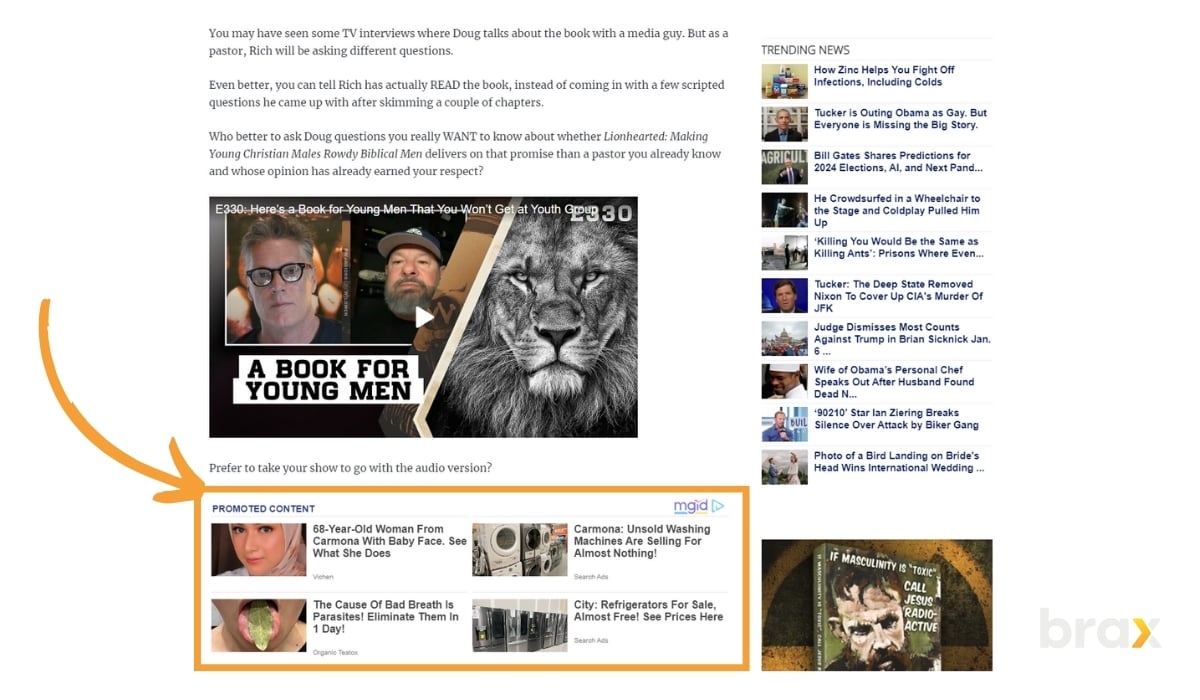
Branded Video or Native Video Ad
Let's talk videos. Specifically, branded video or native video ads. They provide a unique opportunity for advertisers to showcase their products in a dynamic, engaging format.
As a website owner, these ads bring a different level of interaction. They hold visitors' attention longer than traditional ads. This increased engagement can boost the success of your ad arbitrage strategy significantly.
In-feed Ads
In-feed ads are a game changer. They sit right in your website's feed, be it on the homepage or at the sidebars.
Blending in with the site's original content, these ads don't interrupt the user's browsing experience. Instead, they enhance it.
Each click on these ads directly increases your ad arbitrage profits. In-feed ads are a mixture of engaging content and subtle advertising, a perfect recipe for ad arbitrage.
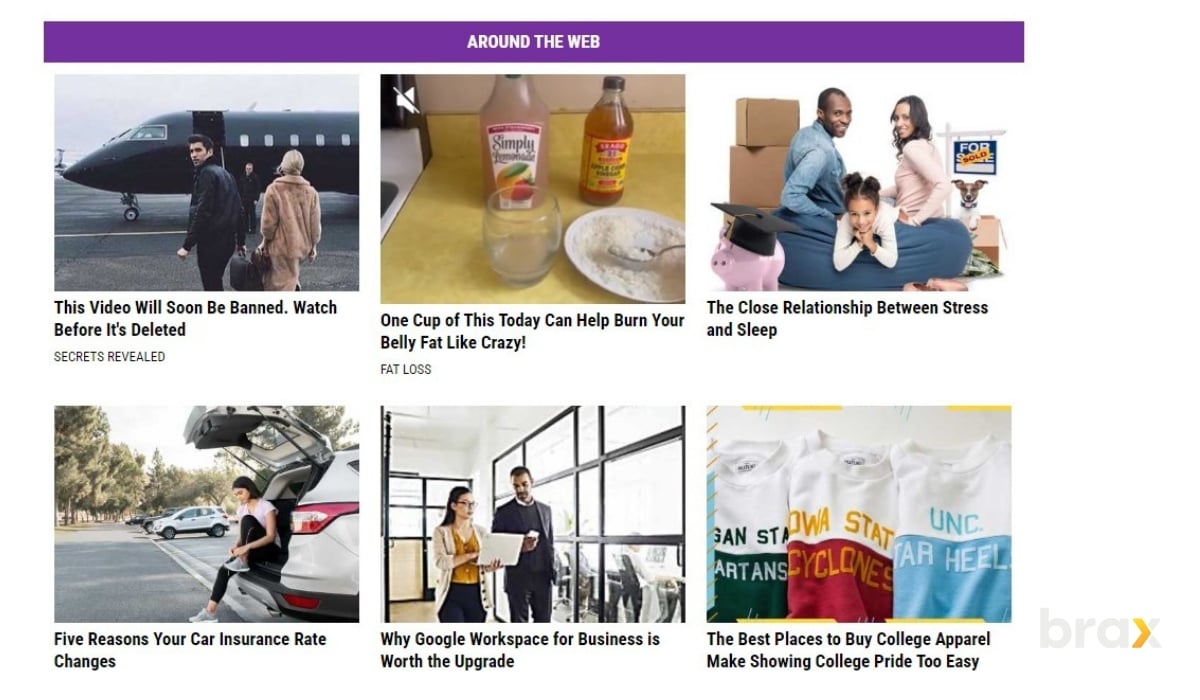
Native Carousel Ads
Native carousel ads are another fantastic tool. These ads allow visitors to swipe through a series of products, services, or even articles, if they want to.
These are mostly used on mobile devices since the small space can limit the ads seen at a time. Making users rotate through the ads helps feature more articles in a single spot.
In-article Ads
In-article ads, as their name suggests, appear within the articles on your site. They're like a well-placed commercial break. They break up the text, giving the reader a moment's breather.
Once integrated seamlessly, they can generate plenty of clicks, contributing positively to your ad arbitrage strategy.
Branded Content or Sponsored Content
Branded or sponsored content. These are perfect for ad arbitrage. They're articles or posts created in partnership with an advertiser.
They look and feel like regular content, fooling the keenest of eyes. And they offer valuable information or entertainment to the reader. It's a win-win situation: the advertiser gets exposure, the reader gets value, and you get increased ad revenues.
In-app Native Ads
Finally, let's look at in-app native ads. These are ads that appear within apps or programs that are free to use.
In-app native ads can reach a different, often younger, demographic. This can diversify your visitor base, leading to broader ad selection and potentially higher ad revenues.
Top Native Ad Networks for Ad Arbitrage
Now that we've covered the different types of native ads, it's time to get down to business and explore the top native ad networks that can supercharge your ad arbitrage efforts.
Believe me, pairing the right ad campaign with the right ad network can feel like striking gold. When you get it right, you can see your ad revenues skyrocket.
Outbrain
Have you heard of Outbrain? It's an esteemed player in the native advertising scene. They pride themselves on reaching an impressive 85% of the global digital population.
This reach is a huge potential advantage for your ad arbitrage strategy. The wider the reach, the wider the pool of potential clicks. When choosing a native ad platform, consider the volume of traffic they can offer.
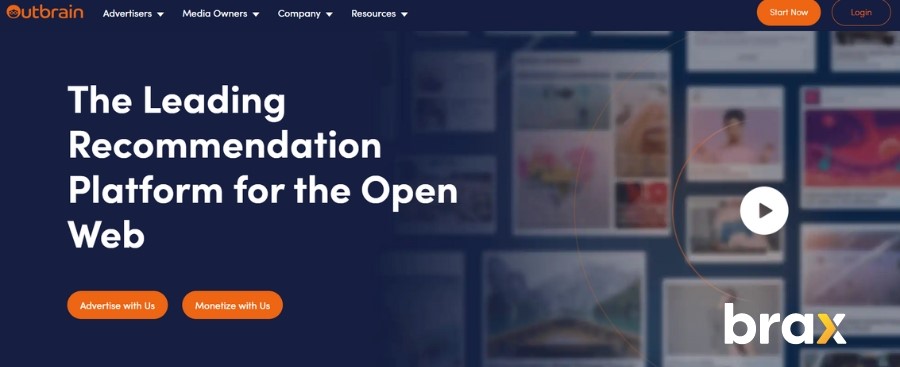
Taboola
Let's talk about Taboola now. Like Outbrain, Taboola offers a great reach. But that's not all.
They have a unique feature called Taboola Feed, a version of in-feed ads. This feed mimics the look of social media feeds. It's a familiar layout for many users, which can help boost engagement.
When choosing a platform, think about how the layout and design of their ads can affect user engagement.
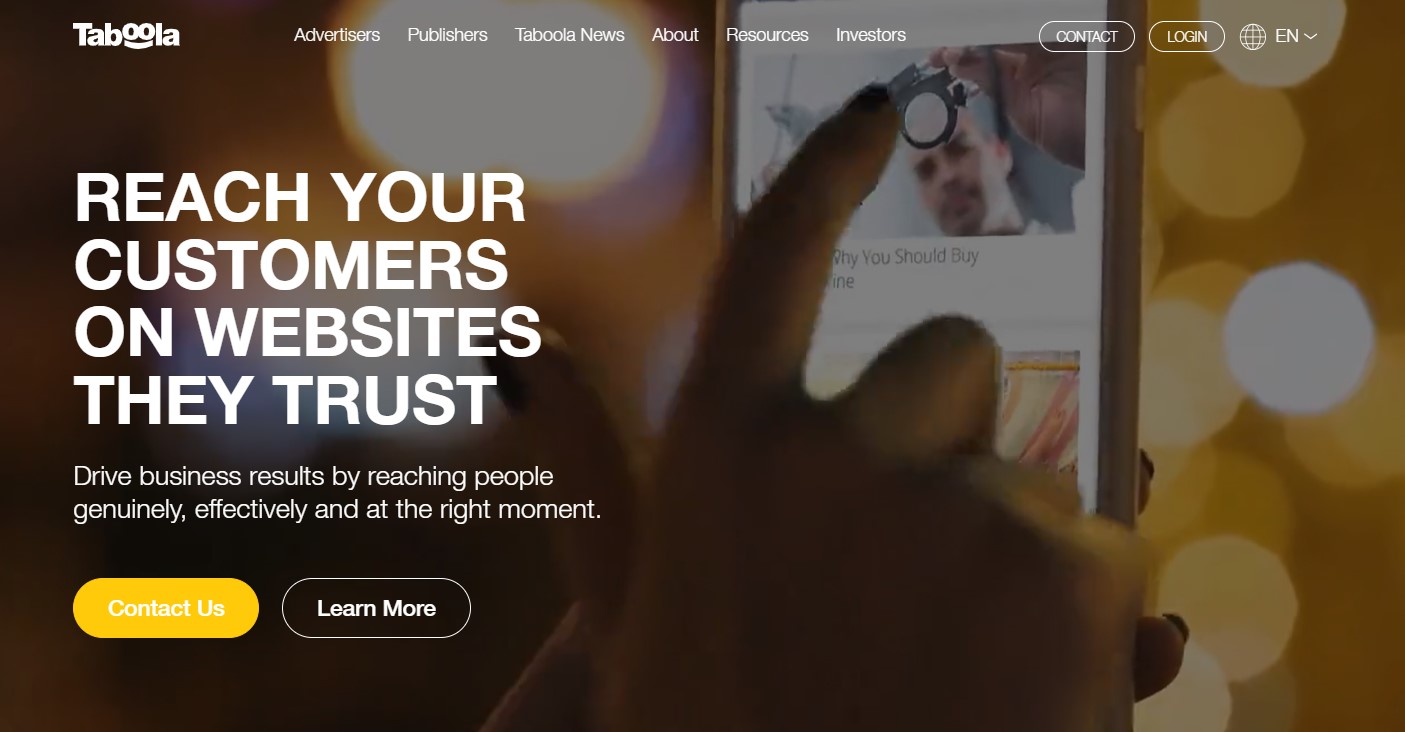
Revcontent
Revcontent, another leading native ad platform, offers advertisers an average of 250 billion recommendations a month. This is a testament to their effective targeting capabilities.
A platform's targeting capabilities can greatly affect the quality of traffic you receive. So, consider this when making your choice.
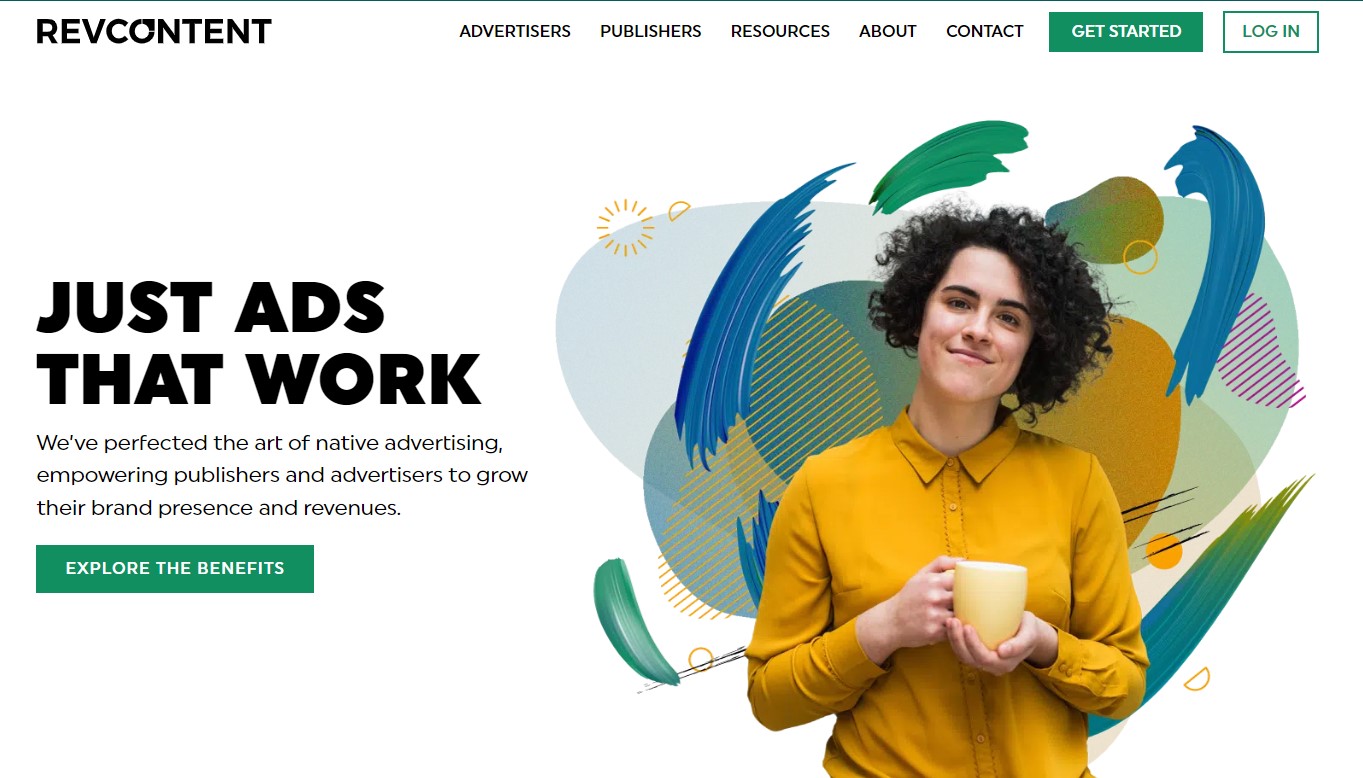
MGID
Next on our list is MGID. What sets MGID apart is its flexibility. They offer various ad formats and targeting options.
They also have a minimum deposit of only $100. This makes them a more accessible option for those working with a smaller budget.
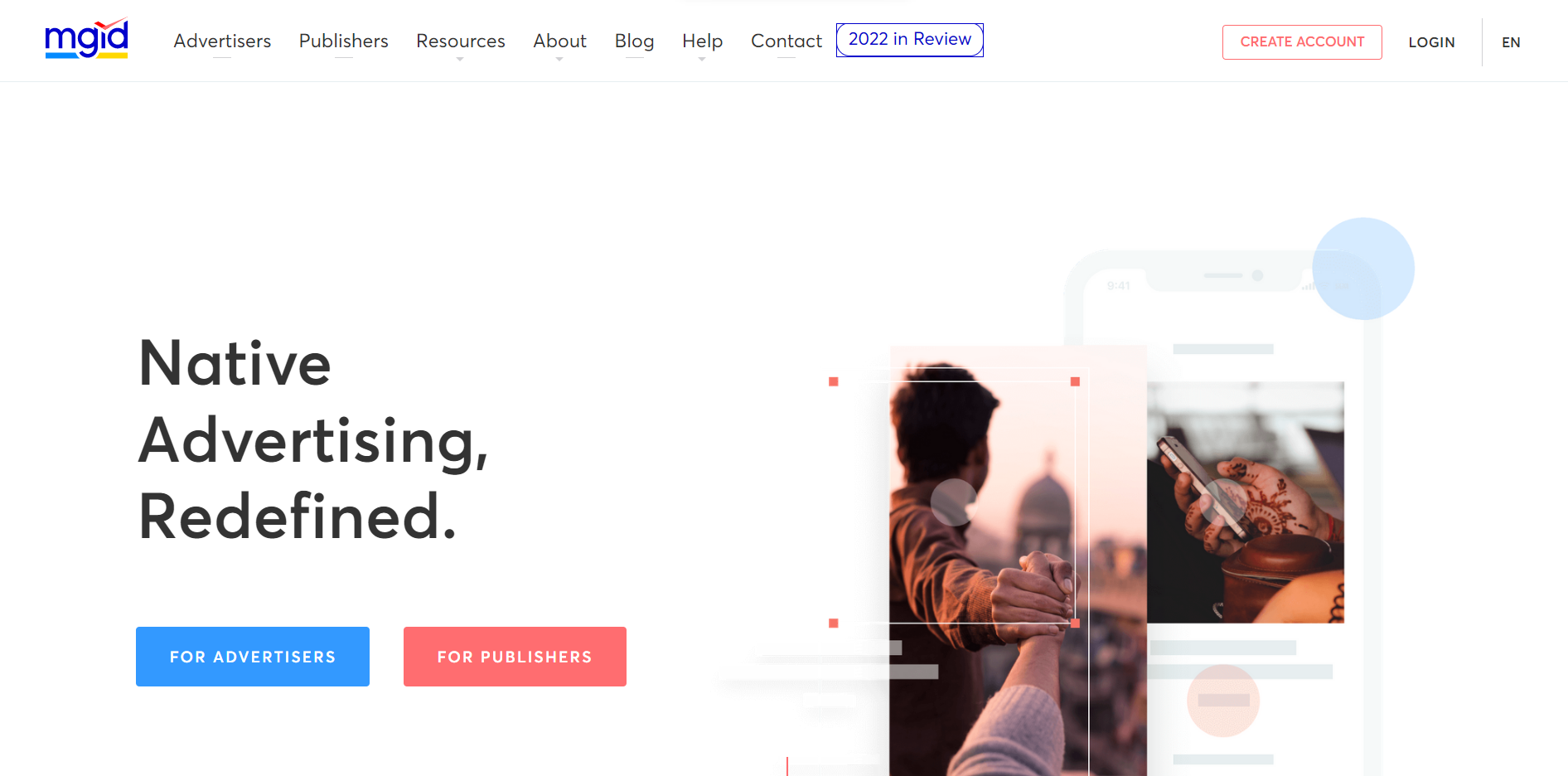
AdNow
Last but not least, AdNow. This platform reaches over 900 million users a month. In addition to this, AdNow has a strong focus on ease of use. Their user-friendly platform can help save you valuable time and energy. The ease of use and support a platform offers is another important factor to consider.
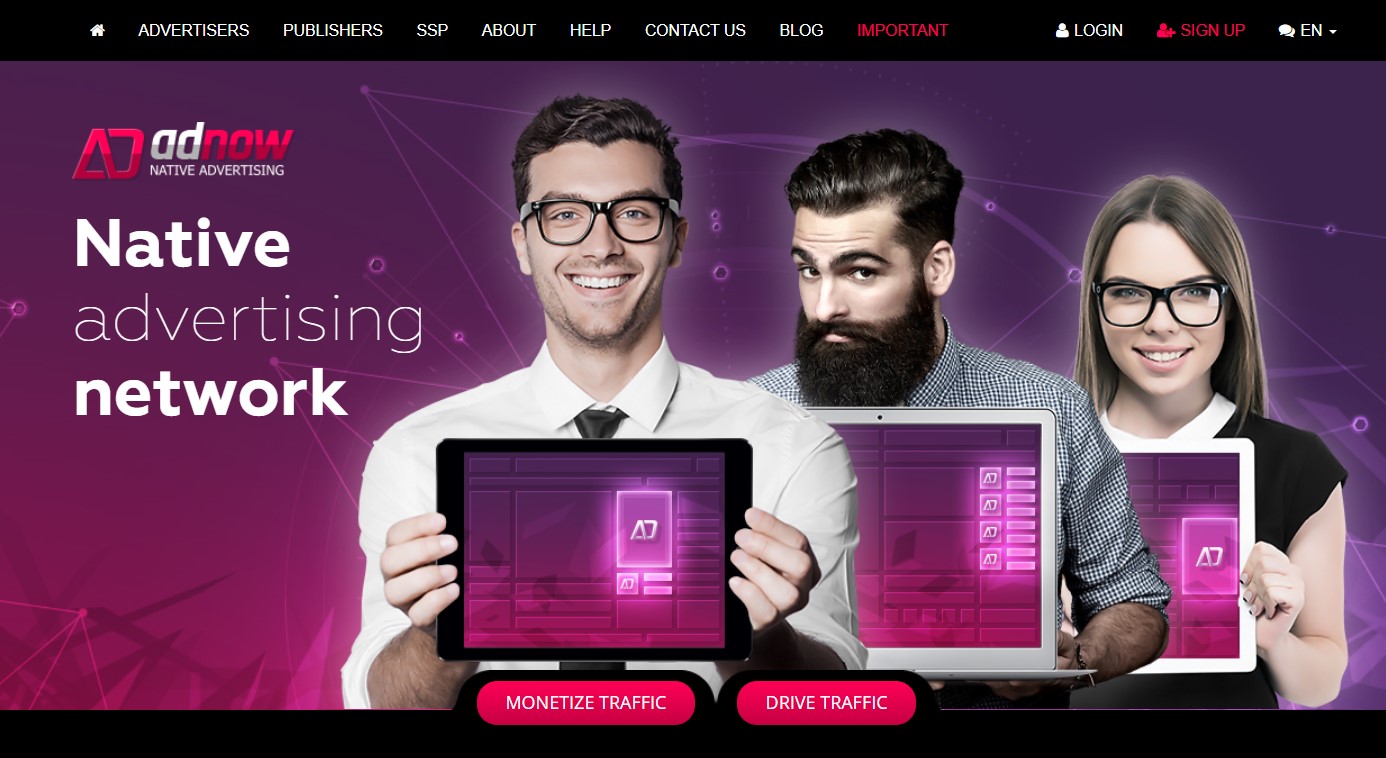
Choosing the right native ad platform for ad arbitrage is a balancing act. You need to weigh up factors such as reach, ad targeting capabilities, ad format options, cost, and ease of use.
Steps to Create Native Ads for Ad Arbitrage
The secret to a successful ad arbitrage business lies in crafting well-optimized native ads, engaging the audience so you can get cheap traffic while boosting your ad revenues.
Let's take a deep dive into the steps to create native ads for ad arbitrage, positioning you for the success you desire.
Identifying the Target Audience
First and foremost, you need to know who you're talking to. Not in a vague, general sense, but really know them.
Identifying your target audience can be the make-or-break point in your ad arbitrage journey. You see, tempting as it is, trying to cast a wide net might not be the best strategy. It's like fishing with a net full of holes – you might catch a lot of fish but most of them will slip right through.
What I mean is, you could get a ton of clicks, sure. But if those clicks are from people who aren't really interested in your content, they'll bounce off your site faster than a ping-pong ball. And that, my friend, is bad for business.
When you're deciding who to target, be selective. Your goal is to reel in people who are genuinely interested in what you're putting out there.
You want that click to translate into a visitor who sticks around, maybe checks out a few other things on your site. That's the kind of engagement that will bump up your ad revenues.

Now, how do you figure out who this dream audience is?
Start by looking at your content.
What's it about? Who would be interested in it?
If you run a tech blog, for example, your target audience might be tech enthusiasts, IT professionals, or tech students. Once you've got that group pegged, dig a little deeper. What are their interests? What are their online habits? Use this information to fine-tune your targeting.
Another valuable resource is your website analytics.
This is like a treasure trove of information about your audience. It can tell you who's visiting your site, what they're looking at, how long they're staying. Use this data to refine your strategy.
Remember, identifying your target audience isn't a one-and-done deal. It's something you'll need to revisit and revise as your site grows and evolves.
What worked six months ago might not work today. So, always keep an eye on your audience and be ready to adjust your strategy as needed.
Drafting the Ad Content
Creating compelling ad content is no small task. It's the heart of your ad arbitrage business, the bait that lures in your audience. It's not just about catchy headlines or flashy images.
Let's talk about the psychology behind enticing ad content. Understanding this will help you craft ads that not only grab attention, but also drive clicks.
Creating a Sense of Urgency
Adding a sense of urgency to your native ads is a surefire way to get more clicks. It's all about the psychology of the user. When time seems short, we tend to act more quickly. So, how can you apply this to your ad arbitrage business?
You need to make your audience feel like they're about to miss out on something fantastic. Strike a balance. You can't be too pushy, but it should feel like a countdown is happening. This method has been used by ad gurus for years, and for a good reason — it works.
Let's dive into some examples.
Take this one for example: "Only 24 hours left! Get the ultimate guide to growing your own veggies!" Notice how the time limit is not just creating urgency but also triggering curiosity about the guide.
Here's another: "This video will soon be banned. Watch before it's deleted."

You're not only advertising a limited-time offer, but also an opportunity to learn. This ad targets an audience seeking financial tips who wouldn't want to miss the chance to learn.
These tactics help in two ways. Firstly, you get more clicks because people don't want to miss out. Secondly, you get cheaper clicks. Why? Because when more people click, the cost per click decreases. It's a win-win, really.
The key takeaway? Time is of the essence. Not just in your ads, but in your ad strategy too. Use urgency to your advantage. Get those clicks rolling and watch your ad arbitrage business flourish. Remember, the clock is always ticking.
Leveraging Fear of Missing Out (FOMO)
FOMO, or Fear of Missing Out, is another psychological trigger you can exploit in your native ads. It's a powerful motivator, compelling people to click to avoid feeling left out.
So, how do we harness the power of FOMO for your ad arbitrage business? Let's crack this nut.
First, understand that FOMO isn't about missing out on a product or a service. It's about missing experiences. Remember, your content is the experience. You're selling the journey, not the destination.
Consider this ad: "Everyone's talking about the latest fitness trend. Click to find out what you're missing!"
This ad isn't selling anything, yet it's tempting. You wonder, what trend? What am I missing? You want to click. You want to be part of the conversation.
Or take this: "Discover the secret accessory that every trendsetter is obsessed with."
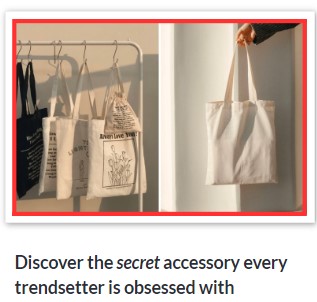
The promise of a secret everyone else knows? It's too enticing to resist.
Every click is a vote. Votes lower your cost per click. More votes mean more traffic. More traffic equals higher ad revenue. See the pattern? It's simple math.
FOMO isn't just a passing fad. It's a psychological phenomenon. Use it. Drive clicks. Lower costs. Boost your ad revenue. That's the magic of FOMO in the ad arbitrage business.
Tapping into Emotions
Emotions. They're powerful drivers of human behavior. They influence our choices, shape our interactions, and inspire our actions.
That's why tapping into emotions in your native ads can significantly boost engagement. It's not about manipulating feelings, but rather creating a genuine emotional connection that resonates with your audience.
Let's consider an example: "Discover the heartwarming story of a puppy rescued from the streets. Click to be part of his journey!"
This ad isn't selling anything, yet it stirs emotions, doesn't it? It evokes sympathy for the puppy, curiosity about his journey, and a desire to learn more. This emotional connection compels clicks.
Or take this example below:

Again, you're not selling anything, but the promise of laughter, an uplifting emotion, is a potent lure.
Your ad content should aim to trigger emotions - joy, surprise, inspiration, curiosity — anything that sparks a reaction and compels a click.
Emotionally-charged ads have a higher click-through rate, meaning more traffic and lower cost per click. We're emotional beings, remember? We don't just want to consume content; we want to feel it.
But sincerity is key. Don't just aim for emotional reactions — strive for authentic emotional connections. Your audience will appreciate your genuineness, and this emotional bond will drive engagement, foster loyalty, and ultimately boost your ad arbitrage business.
In the realm of ad arbitrage, emotions aren't just powerful; they're profitable.
Promoting Social Proof
Social proof is a winning strategy in your ad arsenal. People trust the crowd. They believe in the judgment of the masses. So, let's use this. Let's leverage it for your ad arbitrage business.
Everyone loves a success story. Show them that. For example, consider this ad: "Find out why 10,000 people swear by this weight loss guide."
What does this do?
It shows popularity. It hints at success. 10,000 people? There must be something good there. Curiosity piqued, they click.
Or consider this: "More than 5000+ readers love this blog's weekly tech newsletter. Find out why." Again, numbers do the talking here. A large reader base implies quality. It suggests valuable content. And who wouldn't want to be part of that?
Remember reviews? They are powerful. Consider this: "This parenting ebook has a 4.9-star rating. Discover why parents love it!"

Star ratings imply quality. High ratings inspire trust. Trust drives clicks. It's that simple.
Showcasing social proof isn't just about bragging. It's about building trust. It's about credibility. It proves that real people have benefited from your content. This social validation can be the push your audience needs to click.
Highlighting Benefits, Not Features
Here's an essential lesson: Highlight benefits, not features in your native ads. Remember, this isn't about what the product does – it's about what the product does for the user.
So, how do we do this? By shifting the focus from any one product to the customer. It's about them, their needs, their desires. Paint a vivid picture of a better life they could have.
Consider this ad: "Unlock a world of culinary delights with this simple recipe guide." It's not just a recipe guide; it's a key to an exciting culinary adventure. The benefit? A tantalizing taste experience.
Or how about this one: "Master the art of digital painting fast! Impress your friends with stunning artwork."
The focus is not on the digital painting guide itself, but the result it offers — a quick mastery of digital painting and the admiration of friends.
People don't buy products; they buy better versions of themselves. So don't showcase the features of a product. Highlight how it improves their lives.
Imagine you're content is about fitness plans. Avoid ads like this: "In-depth fitness plan with 50+ exercises and diet tips."
Instead, opt for: "Sculpt your dream body in just 8 weeks with this easy-to-follow plan."

See the difference? The first talks about features — exercises, diet tips. The second talks about benefits — achieving fitness goals, sculpting a dream body.
That's the power of prioritizing benefits over features in your ad content. It's about understanding and appealing to the human desire for self-improvement.
Focus on the 'after' picture. Show them a better, happier, successful version of themselves. This approach will attract more clicks, and ultimately, reduce your cost per click.
So, there you have it. Psychology-based techniques to help you craft more effective ad content. Remember, though, these are not magic bullets.
They won't work unless they're part of a well-thought-out strategy, and they won't make up for lackluster content or website performance.
But they can give you an edge in the highly competitive world of ad arbitrage. Use them wisely, and watch your click-through rates soar.
Testing and Refining the Ad
So, you've crafted your ad, but the work doesn't stop there. It's time to refine and perfect it. This is where testing comes in.
Make it a habit to regularly test your native ads. Modify, experiment, and observe. See the impact of each change on your click-through rates.
You can make this process smoother with tools like Brax. It's a powerhouse native ads management tool that can work wonders for your ad arbitrage business.
Brax streamlines your ad creation, management, and optimization efforts. It provides insightful analytics to guide you in making data-driven decisions.
Remember, improvement is a continuous journey, not a destination. You might find that an ad's performance improves with a different headline or a brighter image. Experiment freely.
Never shy away from testing multiple variants of the same ad. Let data be the judge. Iterate, refine, test again. Ads need refinement. They need testing. And with Brax, you get all the tools needed to tweak and test in real-time.
Brax is your partner in ad arbitrage. It's not just a tool, it's a solution. So, how about taking a closer look at what Brax can do for you? Schedule a live demo now, and let's take your ad arbitrage business to new heights. Adventure awaits. Are you ready?

